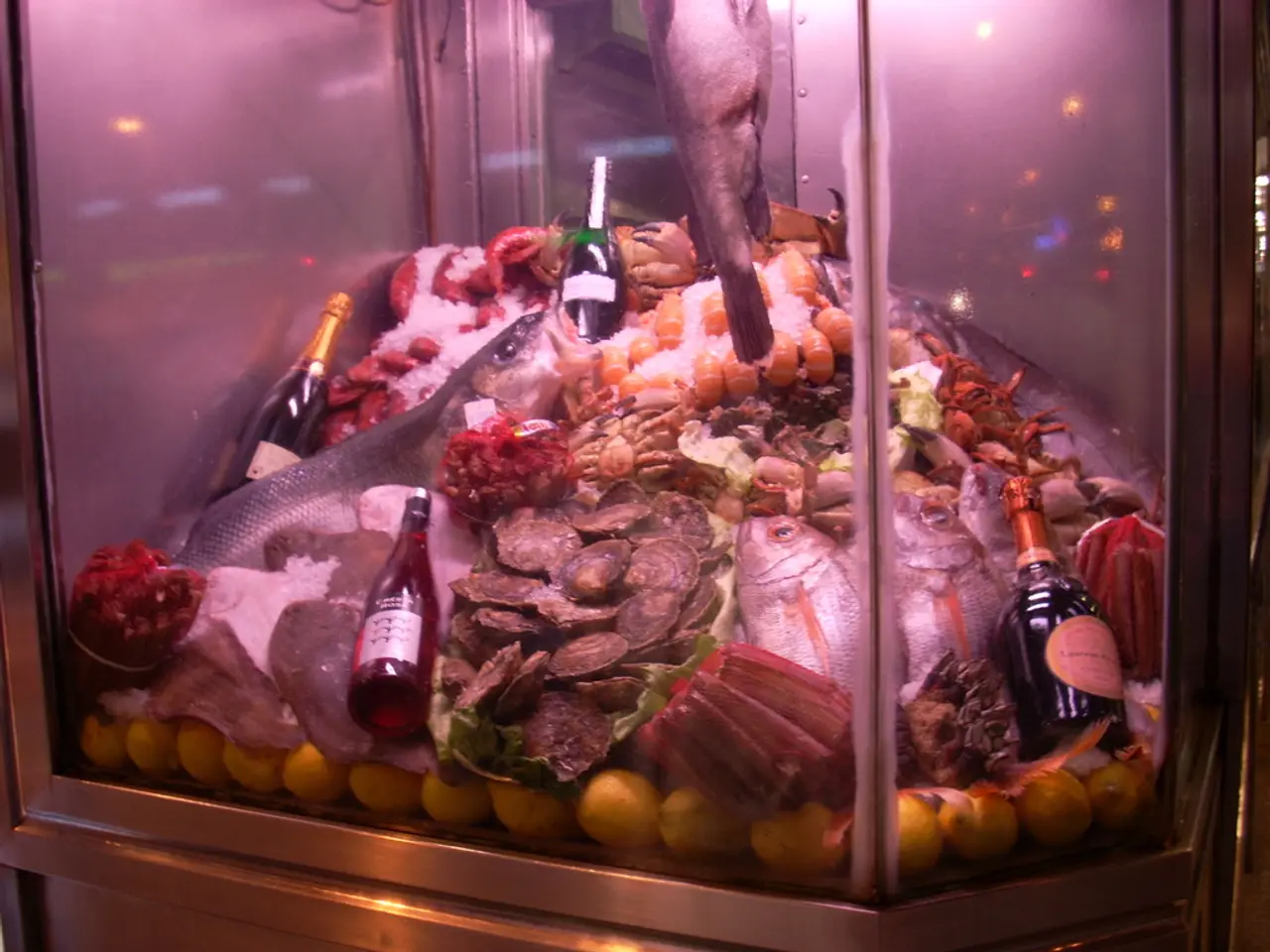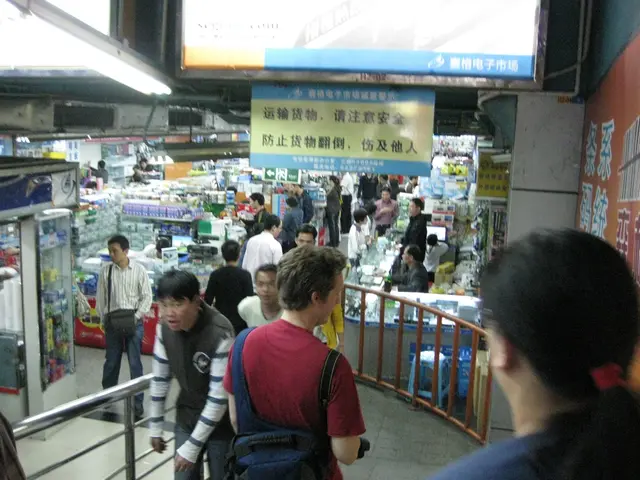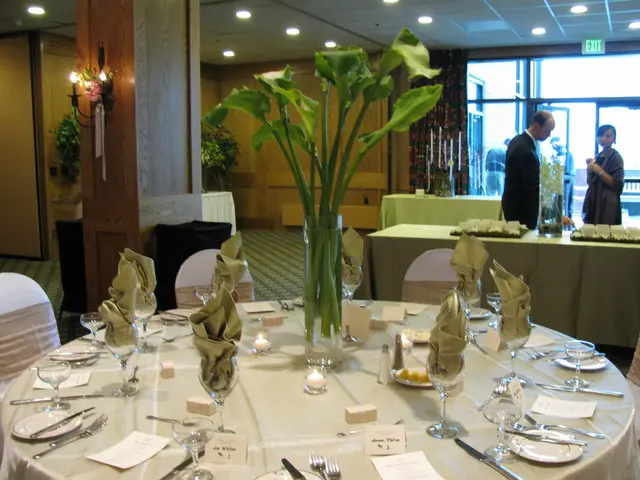Sustaining Food Supply through Aquaculture: A Potential Solution for Global Hunger Crisis
In the vast expanse of the world's oceans and freshwater bodies, a new chapter in agriculture is unfolding. This is the story of aquafarming, or aquaculture, a practice that involves the cultivation of aquatic organisms like fish, shellfish, and plants.
Aquafarming encompasses a variety of methods, ranging from net pens or cages in water, pond cultures on land, to integrated multi-trophic aquaculture systems. This diversity allows for adaptability and sustainability across different ecosystems.
The production chain of most aquafarming methods is similar, consisting of a hatchery, farm, farm mill, and processors. However, the industry has faced challenges in the past, such as the large-scale habitat destruction in the 1980s, particularly with the bulldozing of tropical mangroves for shrimp farms.
Despite these issues, aquafarming plays a crucial role in feeding the world. Over 100 million people rely on it for their livelihoods, and its expansion in developing countries can provide more job opportunities. Aquafarming is particularly important in these regions, as it increases food availability and accessibility, offering a relatively healthy and affordable protein source.
However, concerns about the industry's environmental impact persist. Antimicrobials are often administered to fish through their feed, and around 80% of these antimicrobials are dispersed into the surrounding environments. This has led to high levels of Antimicrobial Resistant (AMR) bacteria, causing over 35,000 deaths each year in the US alone, with the number predicted to be much higher in developing countries.
The use of antibiotics and pesticides is a concern, as many of these substances are banned in the US, Europe, and Japan. This practice can lead to AMR, a global health threat.
But there is hope. Innovative systems like integrated multi-trophic systems and recirculatory systems can help mitigate the problem of concentrated waste matter in aquafarming. Kelp farms, for instance, are more efficient and environmentally friendly than many traditionally grown terrestrial vegetables, as they can grow without freshwater, arable land, pesticides, or fertilizers.
Looking ahead, the aquafarming industry is poised for significant growth, driven by AI and technology adoption. The global market is expected to grow at a Compound Annual Growth Rate (CAGR) of around 13% by 2030. This growth will be marked by precision aquaculture through AI-powered sensors, predictive disease management, and autonomous feeding to increase yield and sustainability while reducing environmental impact and costs.
Regional advancements, such as in Saudi Arabia, aim to boost production efficiency and domestic seafood output significantly through innovative systems like recirculating aquaculture and biofloc technology, all aligned with food security goals.
The United Nations' 2030 Agenda for Sustainable Development, adopted in 2015, includes SDG 14, which aims to conserve and sustainably use the oceans, seas, and marine resources for sustainable development. The focus moving forward should be on increasing food production in a way that ensures practices are sustainable and non-detrimental to the environment.
As the aquafarming industry continues to evolve, it is essential to balance food production with environmental preservation. The future of aquafarming lies in its ability to adapt, innovate, and prioritise sustainability for the benefit of both people and the planet.
Read also:
- Peptide YY (PYY): Exploring its Role in Appetite Suppression, Intestinal Health, and Cognitive Links
- Toddler Health: Rotavirus Signs, Origins, and Potential Complications
- Digestive issues and heart discomfort: Root causes and associated health conditions
- House Infernos: Deadly Hazards Surpassing the Flames








